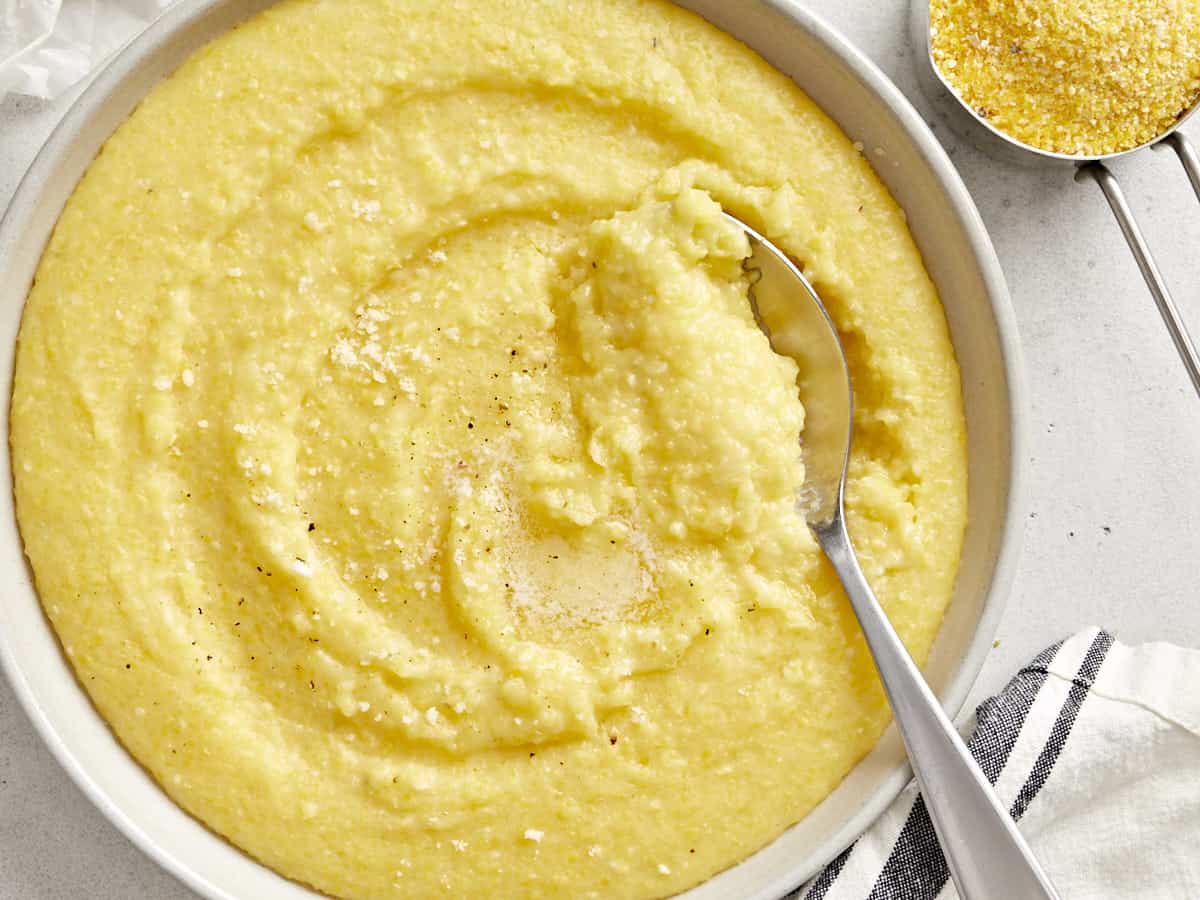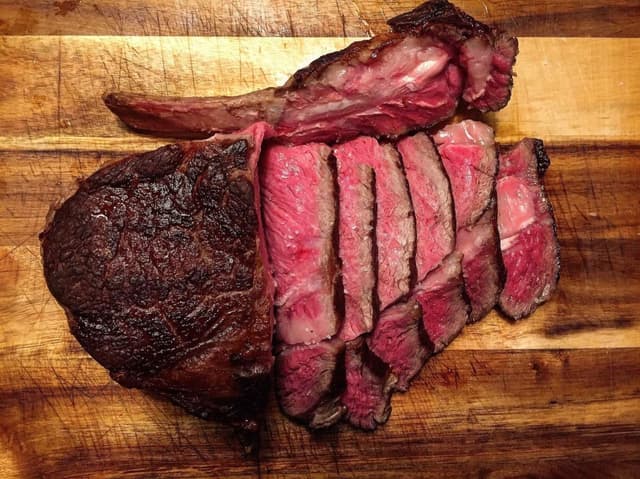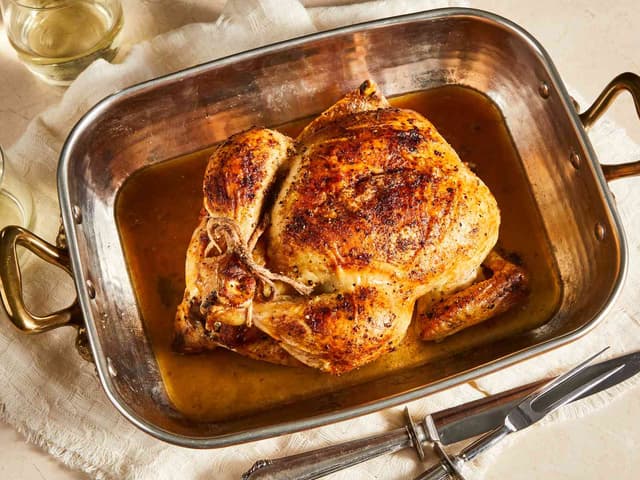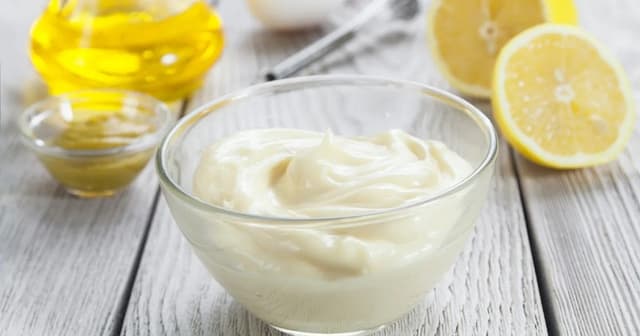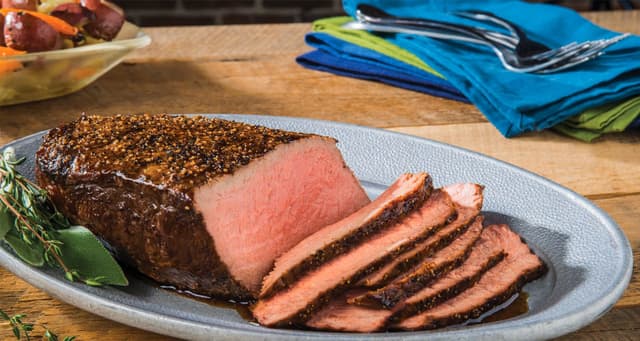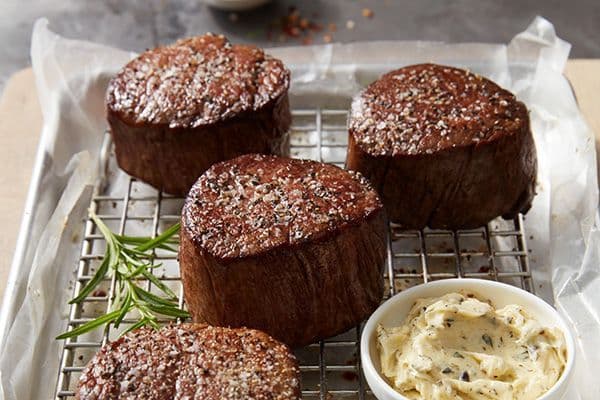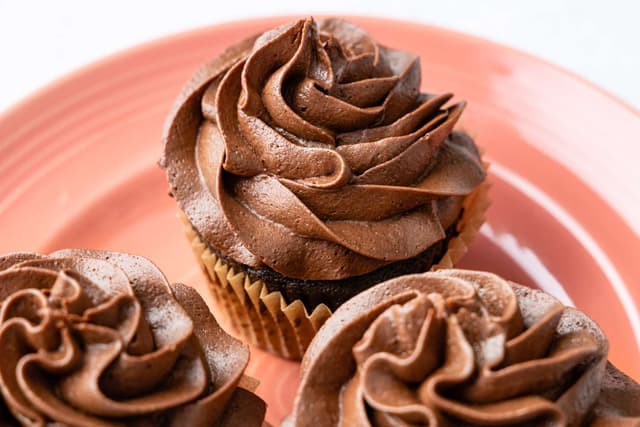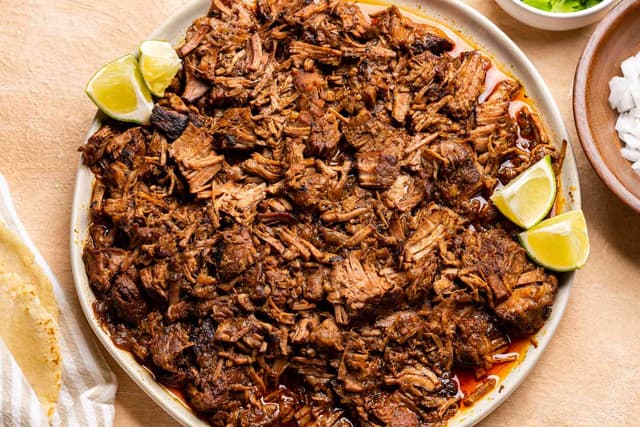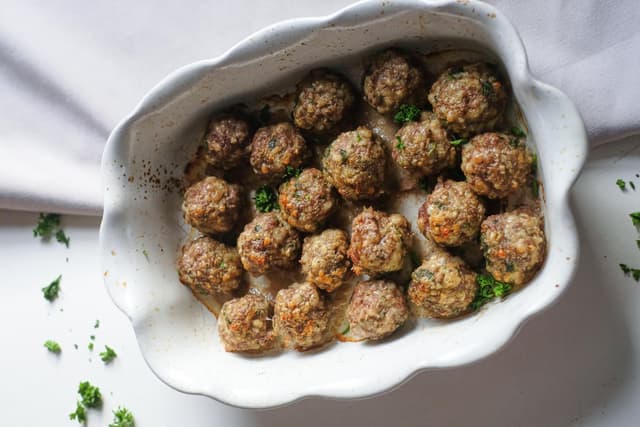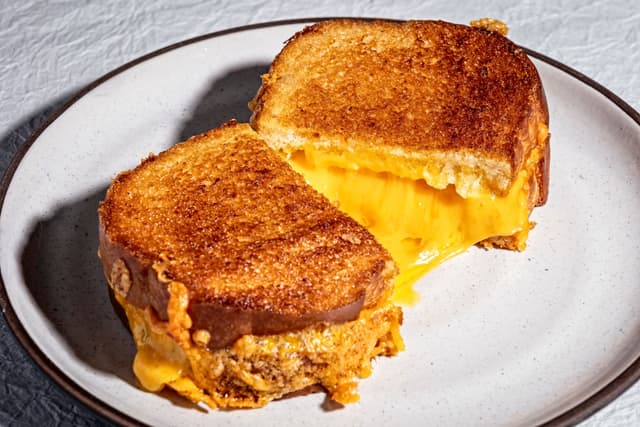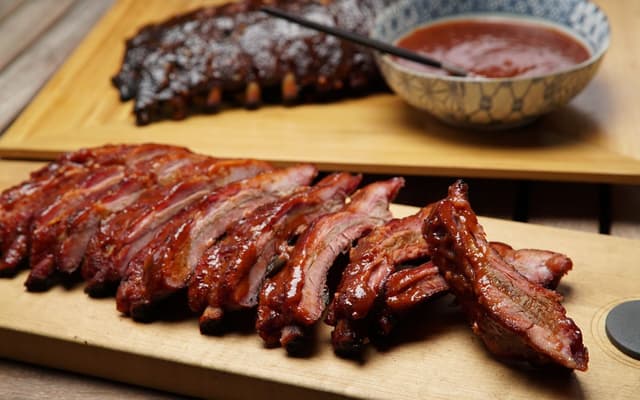A Foolproof Guide to Creamy, Dreamy Italian Comfort
Picture a steaming, golden bowl of polenta, so creamy it flows from the spoon like liquid sunshine. It’s the ultimate culinary hug, a dish that feels both rustically simple and undeniably elegant. Polenta is pure comfort food, carrying a sense of nostalgia that warms you from the inside out, evoking memories of shared meals and cherished family traditions.
This humble cornmeal porridge is also a culinary time machine, connecting your kitchen to a rich and resilient history. Its journey from a basic sustenance for Northern Italian peasants—once known as pane dei poveri, or "the bread of the poor"—to a celebrated star on modern fine-dining menus is a testament to its timeless appeal. With this recipe, you're not just making a meal; you're tasting a piece of living history.
Why Make This Delicious Recipe & When to Serve It
Making polenta from scratch is a deeply rewarding experience that yields a flavor and texture far superior to any instant variety. It is the perfect blank canvas, ready to absorb the flavors of anything you pair it with, from a simple knob of butter to a complex, slow-simmered ragù.
This recipe is your go-to for so many occasions. It’s the ideal slow-cooking project for a cozy weekend, filling your home with a comforting aroma. As a naturally gluten-free dish, it’s a brilliant and inclusive choice for potlucks and family gatherings, guaranteed to please a crowd.
For holiday dinners, consider it an elegant and impressive alternative to mashed potatoes. It pairs beautifully with rich, braised meats like osso buco or short ribs, elevating your festive feast to a whole new level of deliciousness.

Basic Ingredients (Serves 4-6)
- 1 cup coarse or medium-grind cornmeal: This is the heart of your polenta. Using a stone-ground variety provides a more complex, nutty flavor and a desirable, slightly rustic texture compared to industrially processed cornmeal.
- 5 cups liquid (water, chicken broth, or a mix): This is the single most important variable for achieving creamy success. A generous 5:1 liquid-to-cornmeal ratio ensures the grains fully hydrate, preventing a gritty texture and creating a luxuriously smooth porridge.
- 121 teaspoons fine sea salt: This is absolutely essential for seasoning the polenta from within. Salt awakens the natural sweetness of the corn and prevents the final dish from tasting flat or one-dimensional.
- 3 tablespoons unsalted butter, cold: Stirred in at the very end, cold butter emulsifies beautifully into the hot polenta, adding a final touch of richness, a glossy sheen, and a velvety mouthfeel that water alone cannot achieve.
- 21 cup freshly grated Parmigiano-Reggiano cheese: This is the flavor powerhouse of the dish. Its salty, nutty notes provide a classic savory depth and umami complexity, transforming the humble corn porridge into a truly Italian delicacy.

Step-by-Step Preparation
1. The Cold Start: Your Secret to Lump-Free Polenta
In a heavy-bottomed saucepan or Dutch oven, combine the 1 cup of cornmeal with the 5 cups of cold liquid and 121 teaspoons of salt before placing it on the heat. Whisk everything together thoroughly until you have a smooth, uniform slurry. This cold-water technique is the most reliable way to prevent lumps from forming right from the start.
2. The Gentle Awakening: From Slurry to Simmer
Place the pot over medium-high heat, whisking frequently as the mixture warms up. Continue stirring until the polenta comes to a boil and begins to thicken noticeably. Immediately reduce the heat to low, so the polenta maintains a gentle simmer, with slow, "lava-like" bubbles breaking the surface every few seconds.
3. The Patient Simmer: Where the Magic Happens
Cover the pot and let the polenta cook for 30 to 45 minutes, uncovering it to stir with a wooden spoon or spatula every 5 to 6 minutes to prevent sticking. Be sure to scrape the bottom and sides of the pot thoroughly with each stir. This long, slow cooking process is crucial for the cornmeal grains to fully soften, swell, and release their starches, which develops a deep flavor and truly creamy texture.
4. The Luxurious Finish: Adding Richness and Flavor
Once the polenta is tender with no hint of graininess and pulls away from the sides of the pot, turn off the heat. Add the 3 tablespoons of cold butter and the 21 cup of grated Parmigiano-Reggiano cheese. Stir vigorously with your spoon or a whisk until the butter and cheese are completely melted and emulsified into the polenta, creating a final, glossy, and exceptionally creamy consistency.
5. The Final Rest: Letting the Flavors Marry
Keep the polenta covered and let it stand off the heat for 5 to 10 minutes before serving. This brief resting period allows the polenta to thicken just a bit more and gives the rich flavors of the butter and cheese a moment to meld perfectly with the sweet corn. Serve it hot in bowls and enjoy immediately for the best texture.

Tips for the Perfect Recipe
- For an Even Creamier Texture:
- Blend Your Cornmeal: For an ultra-smooth, restaurant-quality texture, pulse the dry cornmeal in a blender for a few seconds to create finer granules before cooking. This helps it cook faster and become exceptionally creamy.
- Pre-Soak the Grains: If you have time, soaking the cornmeal in the cooking liquid for several hours or overnight at room temperature can significantly cut down on cooking time and ensure maximum hydration for the grains.
- To Boost the Flavor:
- Use Flavorful Liquids: While water is traditional, using chicken or vegetable broth instead adds an instant layer of savory depth. For an even richer result, substitute up to half of the water with milk or cream.
- Add Aromatics: Gently sauté a clove of minced garlic or a finely chopped shallot in the pot with a little olive oil before adding the liquid and cornmeal for a foundational layer of aromatic flavor.
- Incorporate Fresh Herbs: Stir in finely chopped fresh herbs like rosemary, thyme, or chives along with the butter and cheese for a final burst of freshness that cuts through the richness.
- Troubleshooting Common Issues:
- If It's Too Thick: Don't worry! Simply whisk in a splash of warm water, broth, or milk until it reaches your desired consistency. Polenta thickens as it cools, so it's very easy to adjust.
- If It's Lumpy: A few vigorous whisks can break up minor lumps. For stubborn clumps that won't budge, a quick blitz with an immersion blender will smooth it out in seconds, restoring its silky texture.

Serving Ideas
- For Creamy, Hot Polenta:
- Classic Italian Pairings: Serve it as a luscious bed for rich, savory toppings like a slow-cooked mushroom ragù, a hearty bolognese sauce, or tender braised short ribs. It is also the perfect partner for Italian sausage and peppers.
- Simple and Elegant: For a minimalist approach, top a warm bowl with a simple pat of butter, a generous shower of extra Parmesan, and a crack of black pepper. Or, create a small well in the center and fill it with a perfectly poached or fried egg.
- The Polenta Bar: For a fun, interactive dinner party, set out bowls of creamy polenta and a variety of toppings—like crispy mushrooms, caramelized onions, crumbled sausage, and sautéed spinach—and let guests build their own delicious creations.
- For Cooled, Solid Polenta (The "Two-for-One" Meal):
- Crispy Fried Polenta Cakes: Pour leftover hot polenta into a lightly oiled dish and chill until firm. Slice it into squares or triangles, pan-fry in olive oil until golden and crisp on both sides, and serve with marinara for dipping.
- Grilled or Broiled Planks: Brush the firm polenta slices with olive oil and grill or broil until nicely charred and heated through. Top with melted cheese, a dollop of pesto, or your favorite roasted vegetables.
- Polenta "Pizza": Use a large round of fried or baked polenta as a creative, gluten-free pizza base. Top it with tomato sauce, mozzarella, and your favorite pizza toppings before baking until bubbly.

Tips for Keeping Polenta Fresh Longer
Storing Polenta
- For Short-Term Warmth: To keep polenta soft and creamy during a dinner party, place the pot over a double boiler or a pan of gently simmering water. Press a piece of plastic wrap or a butter wrapper directly onto the surface to prevent a skin from forming.
- For Refrigerator Storage: Allow any leftover polenta to cool slightly before transferring it to an airtight container. It will solidify into a firm block upon chilling. Store in the refrigerator for up to 3 days.
- For Freezing: To freeze, wrap the solid block of chilled polenta tightly in plastic wrap and then a layer of aluminum foil. It will keep well in the freezer for up to 3 months.
Keeping It Fresh
- Reheating to a Creamy State: Break up the cold, solid polenta in a saucepan. Add a generous splash of water, milk, or broth and reheat over low heat, whisking constantly to break up the polenta and restore its original creamy, smooth texture.
- Reheating in the Microwave: For a quick method, place a portion in a microwave-safe bowl with a splash of liquid. Cover the bowl with a damp paper towel to create steam and prevent drying, then heat in 30-second intervals, stirring in between, until hot and creamy.
Conclusion
Polenta is more than just a recipe; it's a versatile, comforting, and deeply satisfying dish that connects you to a rich culinary history. With these simple techniques and tips, you can confidently create a perfect bowl of creamy polenta that will warm your soul and impress your guests, proving that the most humble ingredients often make the most memorable meals.
Frequently Asked Questions
Q: What is the real difference between polenta and grits?
A: While both are corn-based porridges, traditional Italian polenta is made from hard flint corn, giving it a distinct texture. Southern grits are typically made from softer dent corn and can include hominy grits, which are treated with an alkali solution for a unique flavor.
Q: My polenta is lumpy! How can I prevent or fix this?
A: To prevent lumps, always whisk your dry cornmeal into cold liquid before you start heating it. If lumps still form, you can usually whisk them out vigorously, or for a perfectly smooth fix, use an immersion blender for a few seconds to make it silky smooth.
Q: Can I use regular cornmeal instead of packages labeled "polenta"
A: Absolutely! Polenta is essentially a dish made from cornmeal. For the best texture, choose a product labeled as medium or coarse-ground yellow cornmeal, as very fine cornmeal can result in a mushy consistency. Stone-ground options will give you the best flavor.
Q: Why is my polenta grainy or gritty?
A: A grainy texture is almost always caused by one of two things: not using enough liquid or not cooking it long enough. The corn granules need ample liquid (aim for a 5:1 liquid-to-cornmeal ratio) and time (at least 30-45 minutes) to fully hydrate and soften.
Works cited
- Polenta: The Best Kind of Porridge - digital Humanities studio, accessed July 10, 2025, https://docstudio.org/2022/12/18/polenta-the-best-kind-of-porridge/
- Northern Italian Cuisine: Polenta — Miramonti Corteno, accessed July 10, 2025, https://www.miramonticorteno.com/blog/2019/8/22/northern-italian-cuisine-polenta
- La Cucina Povera: Polenta, the Humble Grain - Food First, accessed July 10, 2025, https://archive.foodfirst.org/la-cocina-povera-polenta-the-humble-grain/
- Polenta: From Peasant To Present - DeLallo, accessed July 10, 2025, https://www.delallo.com/blog/polenta-from-peasant-to-present/
- Polenta - Wikipedia, accessed July 10, 2025, https://en.wikipedia.org/wiki/Polenta
- Easy polenta recipes? : r/EatCheapAndHealthy - Reddit, accessed July 10, 2025, https://www.reddit.com/r/EatCheapAndHealthy/comments/2dq3w8/easy_polenta_recipes/
- Polenta Bar (With Lots of Toppings!) - The Two Bananas, accessed July 10, 2025, https://thetwobananas.com/polenta-bar-with-lots-of-toppings/
- How to Make Perfect Polenta Recipe - Allrecipes, accessed July 10, 2025, https://www.allrecipes.com/recipe/234933/how-to-make-perfect-polenta/
- Creamy Polenta | The Mediterranean Dish, accessed July 10, 2025, https://www.themediterraneandish.com/polenta-recipe/
- Smooth and Creamy Polenta - Serious Eats, accessed July 10, 2025, https://www.seriouseats.com/smooth-creamy-polenta-recipe
- A reasonable question | Orangette, accessed July 10, 2025, https://orangette.net/2010/03/a-reasonable-question/
- To Make the Creamiest Polenta, Don't Turn on the Stove, accessed July 10, 2025, https://www.foodandwine.com/cooking-techniques/how-to-make-no-cook-easy-polenta-tips
- Creamy Polenta Recipe - Love and Lemons, accessed July 10, 2025, https://www.loveandlemons.com/polenta-recipe/
- Polenta is grainy. What am I doing wrong? : r/AskCulinary - Reddit, accessed July 10, 2025, https://www.reddit.com/r/AskCulinary/comments/115ntag/polenta_is_grainy_what_am_i_doing_wrong/
- all of your polenta questions answered - Marley Spoon, accessed July 10, 2025, https://marleyspoon.com/blog/all-of-your-polenta-questions-answered
- How to Make Perfect Polenta | Serious Eats - YouTube, accessed July 10, 2025, https://www.youtube.com/watch?v=fBPD1NscVyU&pp=0gcJCfwAo7VqN5tD
- Creamy Polenta - San Gennaro Foods, accessed July 10, 2025, https://www.polenta.net/recipes/creamy-polenta
- Creamy Polenta - 101 Cookbooks, accessed July 10, 2025, https://www.101cookbooks.com/creamy-polenta/
- 20 Polenta Recipes That Are Creamy and Comforting - Food Network, accessed July 10, 2025, https://www.foodnetwork.com/recipes/photos/polenta-recipes
- Recipe reccomendations for using TJ's polenta log to make creamy polenta? : r/traderjoes, accessed July 10, 2025, https://www.reddit.com/r/traderjoes/comments/sizdwp/recipe_reccomendations_for_using_tjs_polenta_log/
- 17 Versatile And Comforting Polenta Recipes - DeLallo, accessed July 10, 2025, https://www.delallo.com/blog/polenta-recipes/
- How do you guys hold polenta if you are having guests over? : r/Cooking - Reddit, accessed July 10, 2025, https://www.reddit.com/r/Cooking/comments/10mu1u9/how_do_you_guys_hold_polenta_if_you_are_having/
- How to hold polenta to avoid lumps? : r/Chefit - Reddit, accessed July 10, 2025, https://www.reddit.com/r/Chefit/comments/ow3b06/how_to_hold_polenta_to_avoid_lumps/
- How To Store Leftover Polenta And Retain Its Moisture - Tasting Table, accessed July 10, 2025, https://www.tastingtable.com/1502831/how-to-store-leftover-polenta/
- Best way to store/reheat polenta after it's cooked? : r/AskCulinary - Reddit, accessed July 10, 2025, https://www.reddit.com/r/AskCulinary/comments/fq9ujb/best_way_to_storereheat_polenta_after_its_cooked/
- www.tastingtable.com, accessed July 10, 2025, https://www.tastingtable.com/1502831/how-to-store-leftover-polenta/#:~:text=Place%20it%20in%20a%20microwave,or%20heavy%20cream%20while%20reheating.
- The Real Difference Between Polenta, Grits, and Cornmeal, According to Experts, accessed July 10, 2025, https://www.seriouseats.com/difference-between-polenta-grits-cornmeal-explained-11702245
- Listener Question: Is There A Difference Between Yellow Corn Grits and Polenta? - Milk Street, accessed July 10, 2025, https://www.177milkstreet.com/2021/09/whats-the-difference-between-grits-and-polenta/
- Substituting polenta? : r/AskBaking - Reddit, accessed July 10, 2025, https://www.reddit.com/r/AskBaking/comments/1hfu3qi/substituting_polenta/
